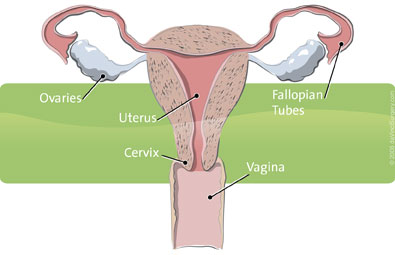Gynecological Surgery
When medication and non-invasive procedures are unable to relieve symptoms, surgery remains the accepted and most effective treatment for a range of gynecologic conditions. These include, but are not limited to, cervical and uterine cancer, uterine fibroids, endometriosis, uterine prolapse and menorrhagia or excessive bleeding.
Traditional open gynecologic surgery, using a large incision for access to the uterus and surrounding anatomy, has for many years been the standard approach to many gynecologic procedures. Yet with open surgery can come significant pain, trauma, a long recovery process and threat to surrounding organs and nerves. For women facing gynecologic surgery, the period of pain, discomfort and extended time away from normal daily activities that usually follows traditional surgery can understandably cause significant anxiety.
Fortunately, less invasive options are available. Some gynecologic procedures enable surgeons to access the target anatomy using a vaginal approach, which may not require an external incision. But for complex hysterectomies and other gynecologic procedures, robot-assisted surgery with the da Vinci® Surgical System may be the most effective, least invasive treatment option. Through tiny, 1-2 cm incisions, surgeons using the da Vinci System* can operate with greater precision and control, minimizing the pain and risk associated with large incisions while increasing the likelihood of a fast recovery and excellent clinical outcomes.
Learn More
To learn more about da Vinci Hysterectomy or any other gynecologic surgery utilizing the da Vinci Surgical System, click here.
While clinical studies support the effectiveness of the da Vinci® System when used in minimally invasive surgery, individual results may vary. Surgery with the da Vinci Surgical System may not be appropriate for every individual. Always ask your doctor about all treatment options, as well as their risks and benefits.
For additional information on minimally invasive surgery with the da Vinci® Surgical System visit www.davincisurgery.com
Uterine Conditions and Treatment
When a woman faces a medical condition that affects her uterus, the hollow, muscular organ that holds and feeds a fertilized egg, the emotional impact can often be as challenging as the physical. These conditions include, but are not limited to, cervical and uterine cancers such as endometrial cancer, uterine fibroids, uterine prolapse, excessive bleeding and endometriosis.
Treatment options are as varied as the conditions themselves, depending on individual circumstances. A woman’s age, health history, surgical history and diagnosis (benign or cancerous), all factor into the recommended course of action.

Endometriosis, also known as endometrial hyperplasia, is a condition in which the endometrial tissue grows outside the uterus, causing scarring, pain, and heavy bleeding. It can often damaging the fallopian tubes and ovaries in the process. A common organic cause of infertility, endometriosis can be treated with medications such as lupron for endometriosis that lowers hormone levels and decreases endometrial growths. While such medications often relieve associated symptoms, a patient should understand the potential side effects before pursuing this treatment regimen.
For endometrial cancer, also known as uterine cancer and more common among women after menopause, standard treatment options include hormone therapy, radiation therapy, chemotherapy and hysterectomy (surgical removal of the uterus). Three of these — radiation therapy, chemotherapy and hysterectomy — are also used to treat cervical cancer.
For benign (non-cancerous) conditions like menorrhagia (heavy menstrual bleeding), non-surgical treatments like hormone therapy or minimally invasive ablative therapies may offer relief. For fibroids, uterine-preserving myomectomy – a surgical alternative to hysterectomy -- may be an option.
Hysterectomy
For most uterine conditions, if available non-surgical treatments fail to relieve symptoms, many women choose a more certain result with elective hysterectomy. Each year in the U.S. alone, doctors perform about 600,000 hysterectomies, making it the second most common surgical procedure.1
While symptoms such as chronic pain and bleeding often point a woman and her doctor toward hysterectomy as the preferred treatment choice, life-threatening conditions such as cancer or uncontrollable bleeding in the uterus often necessitate a hysterectomy and follow-up treatment.
While hysterectomy is relatively safe, always ask your doctor about all treatment options, as well as their risks and benefits, to determine which approach is right for you. And if hysterectomy is recommended or required, you owe it to yourself to learn about da Vinci Hysterectomy, a robot-assisted, minimally invasive surgery that for many women has potential as the safest and most effective treatment available.
Learn More
- Center for Disease Control. Keshavarz H, Hillis S, Kieke B, Marchbanks P. Hysterectomy Surveillance — United States, 1994–1999. Morbidity and Mortality Weekly Report. Surveillance Summaries. July 12, 2002. Vol. 51 / SS-5. Page 1. www.cdc.gov/mmwr/PDF/ss/ss5105.pdf
While clinical studies support the effectiveness of the da Vinci® System when used in minimally invasive surgery, individual results may vary. Surgery with the da Vinci Surgical System may not be appropriate for every individual. Always ask your doctor about all treatment options, as well as their risks and benefits.
For additional information on minimally invasive surgery with the da Vinci® Surgical System visit www.davincisurgery.com
